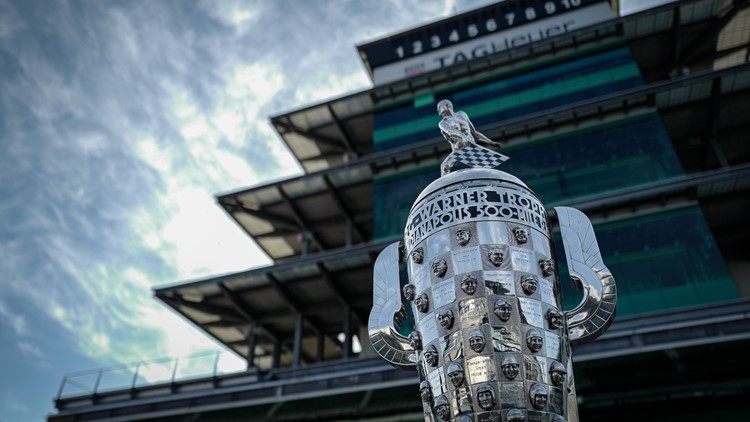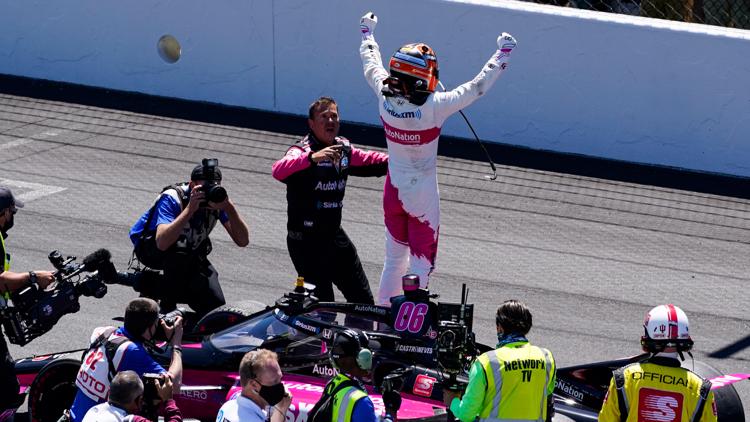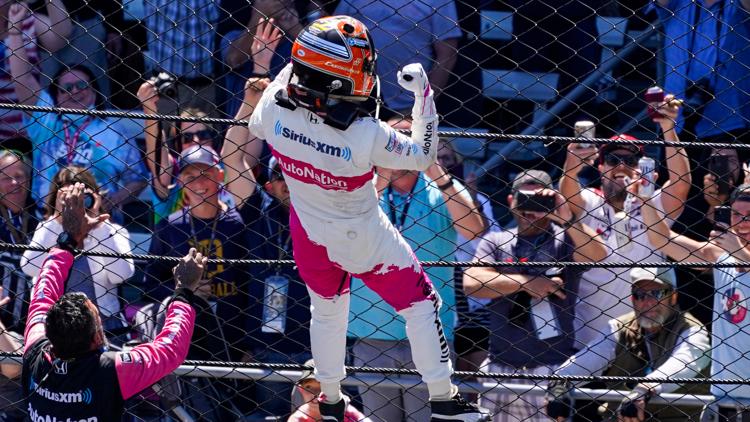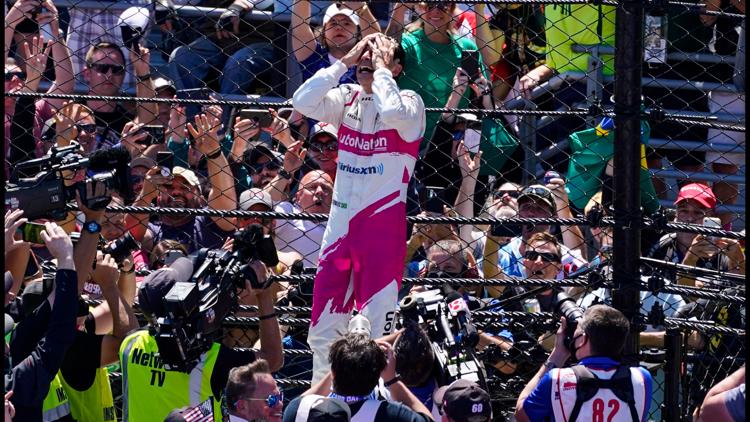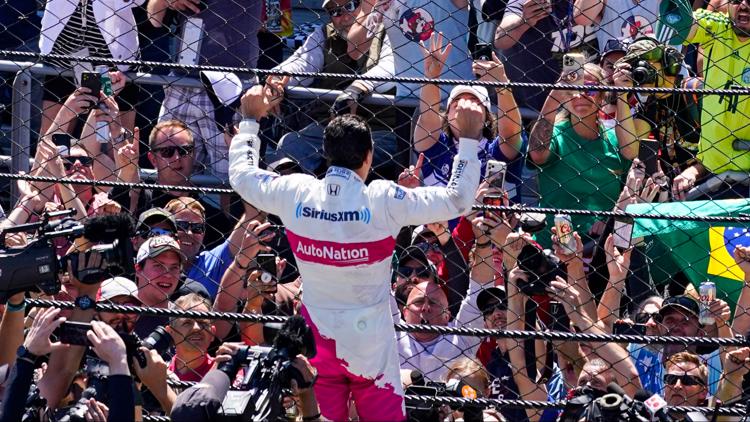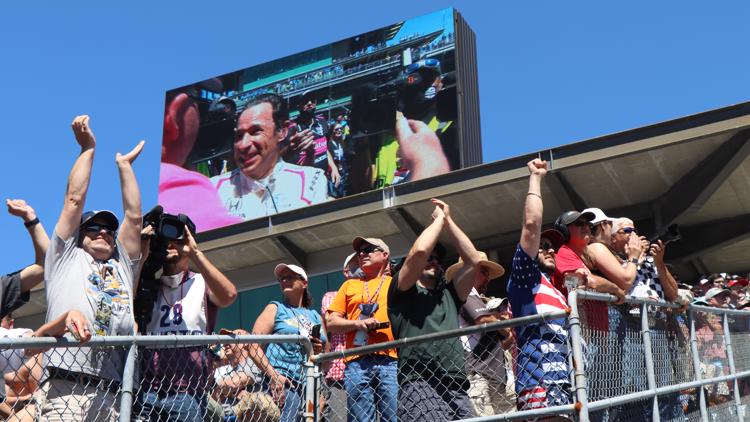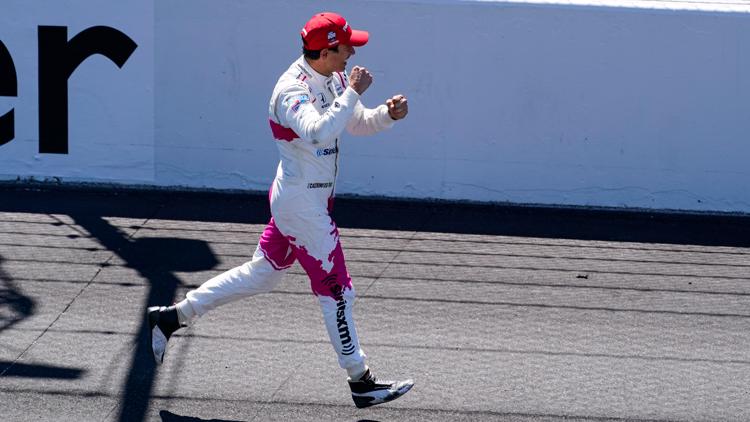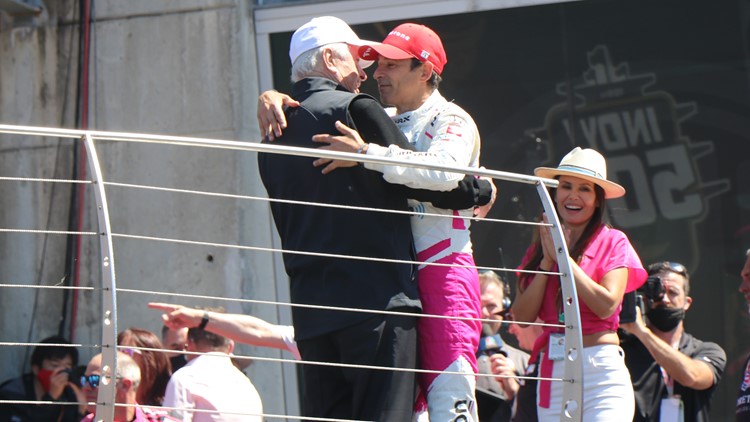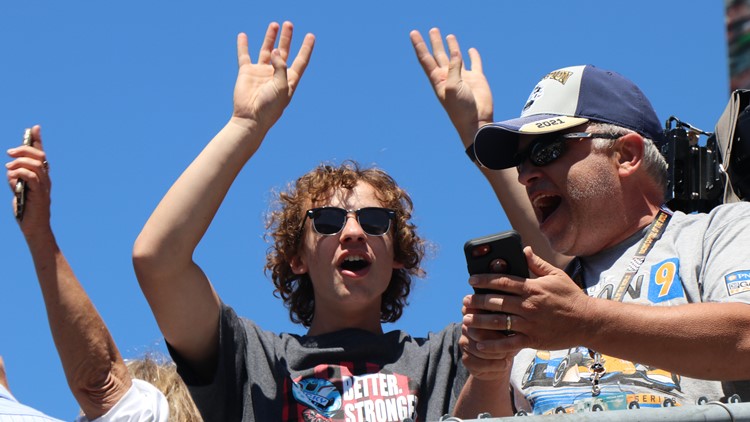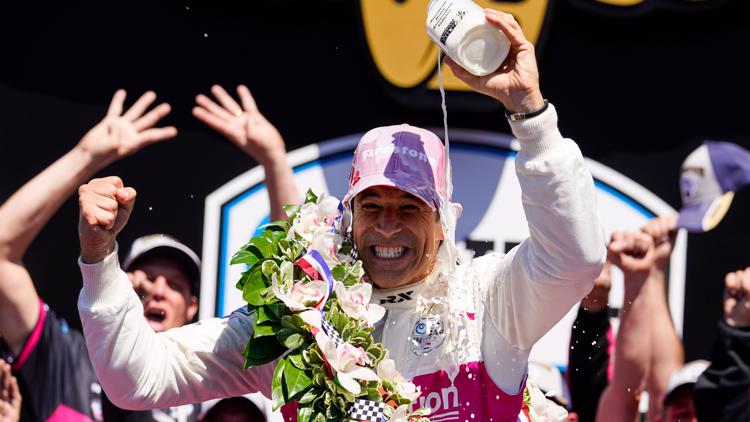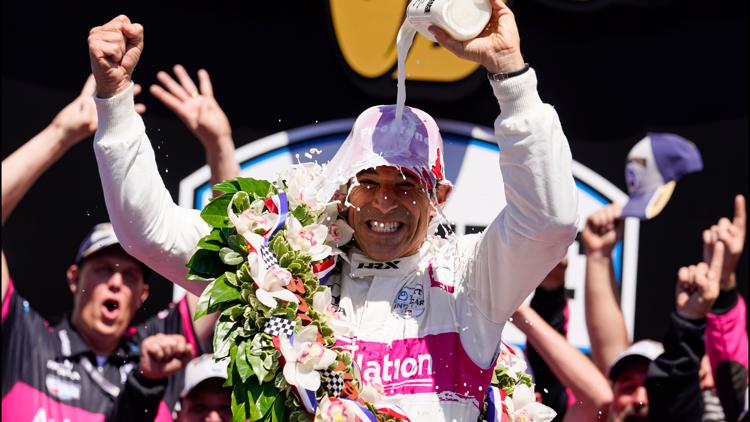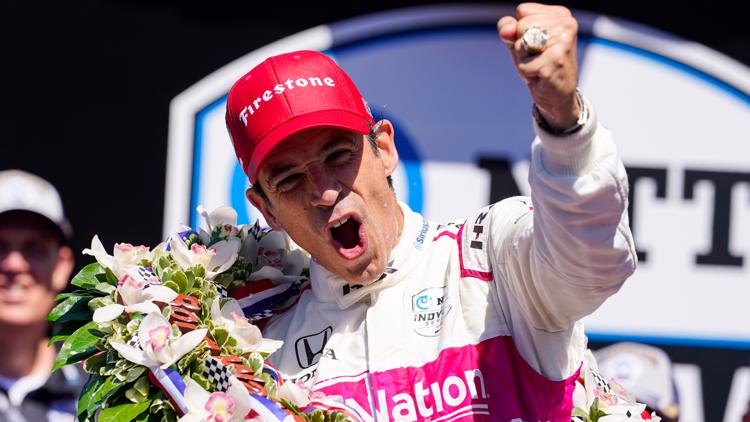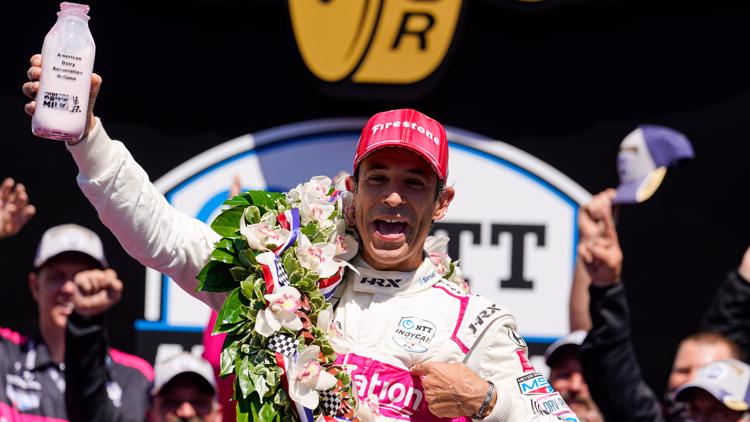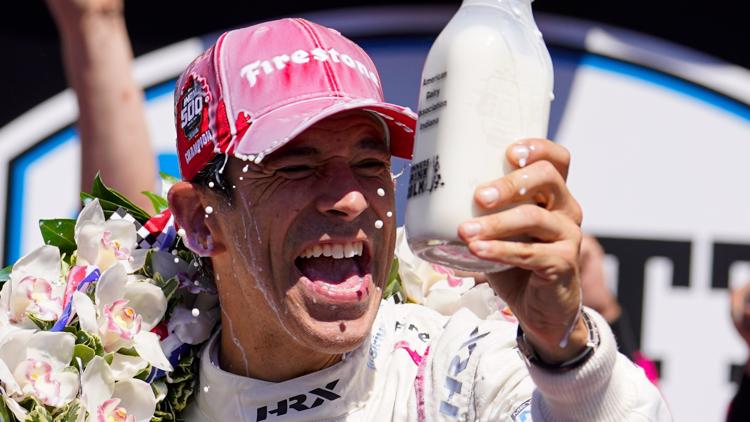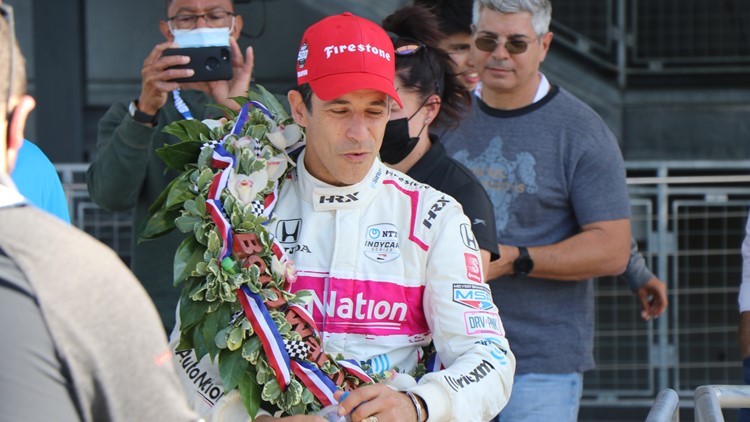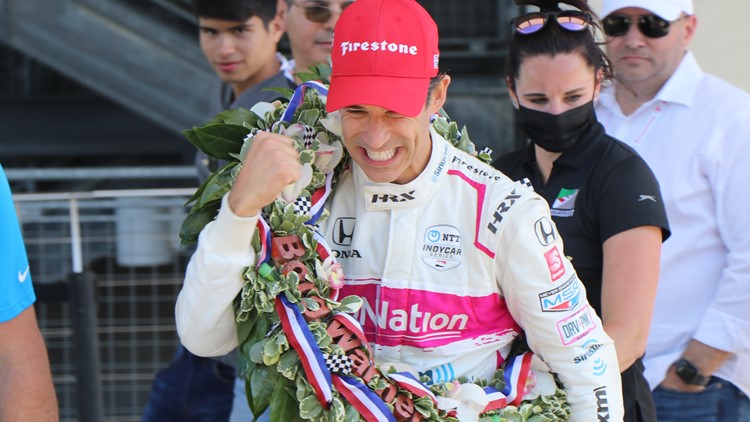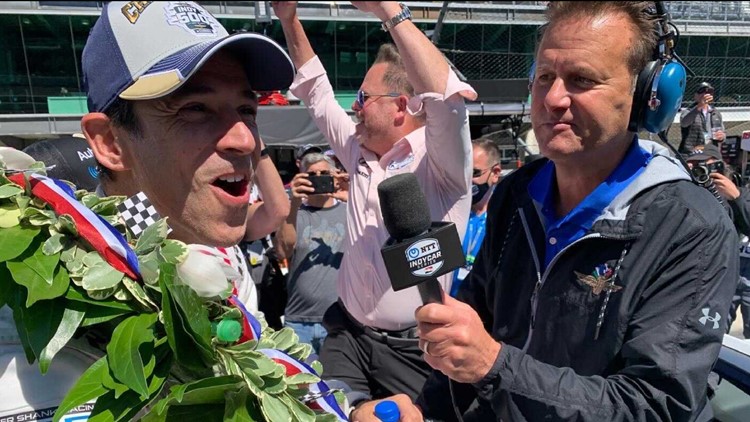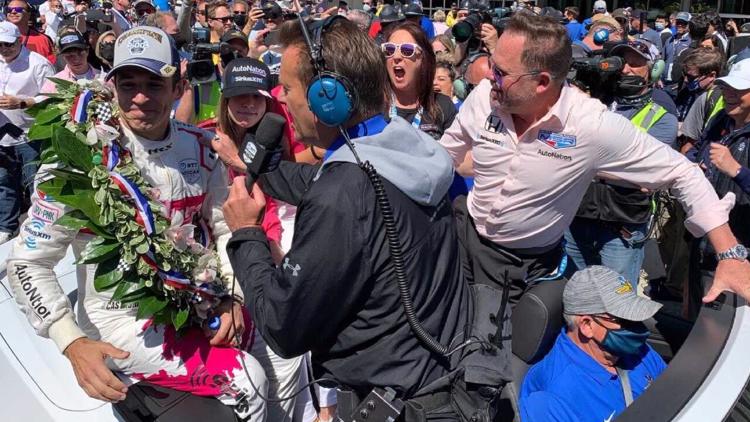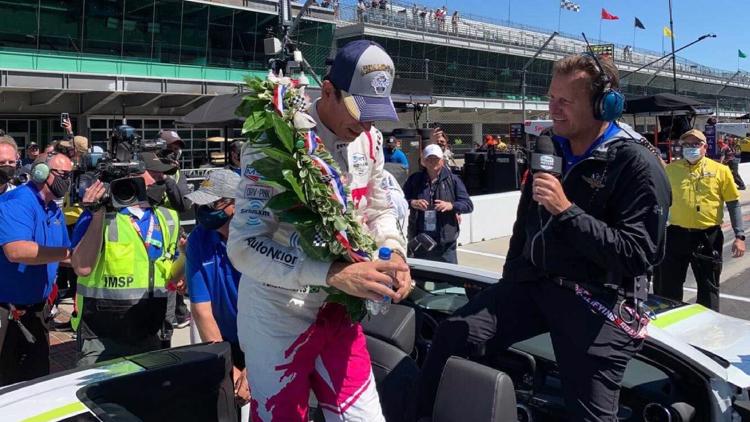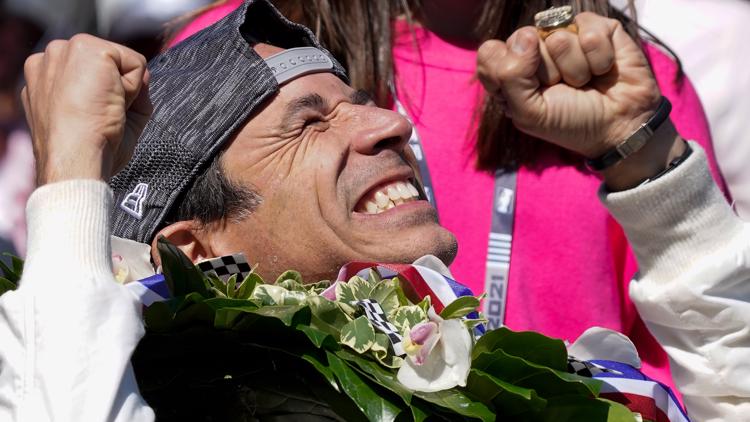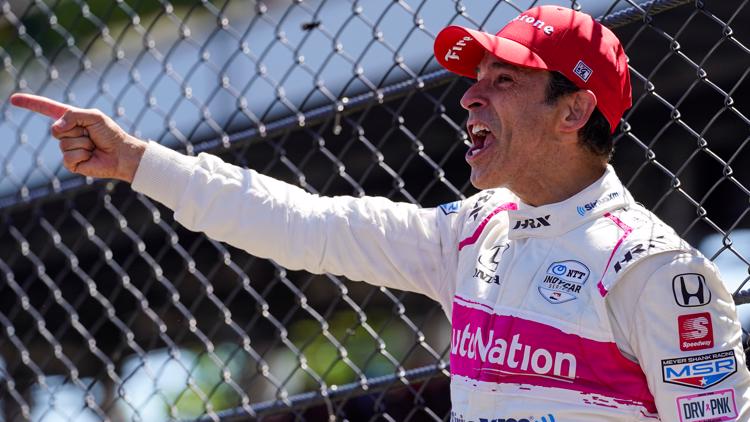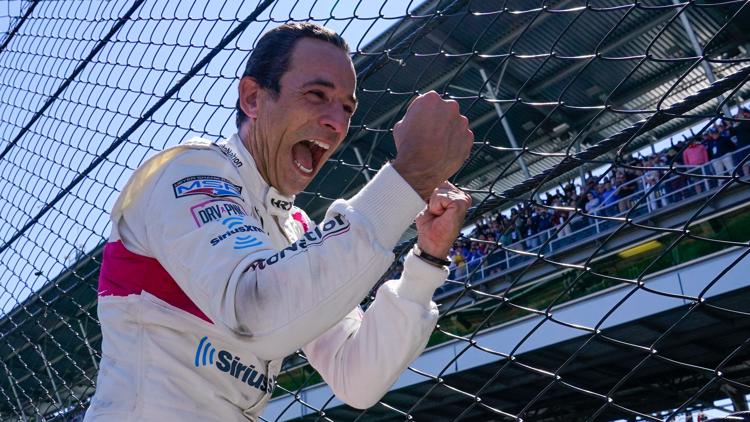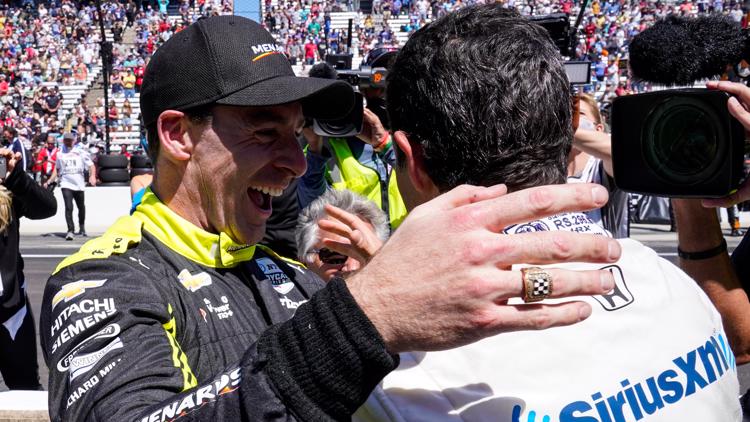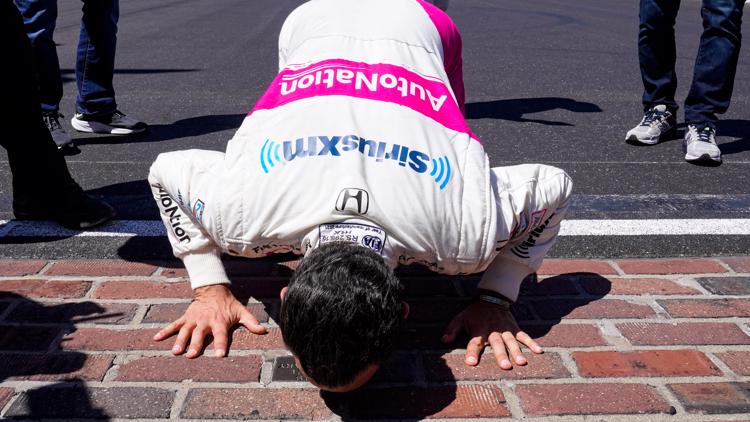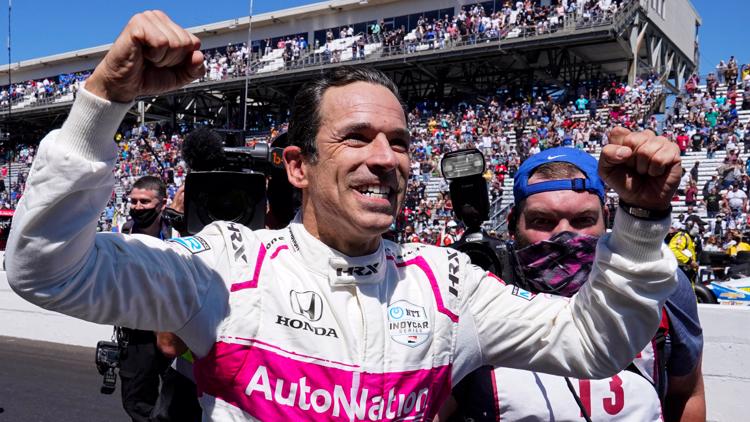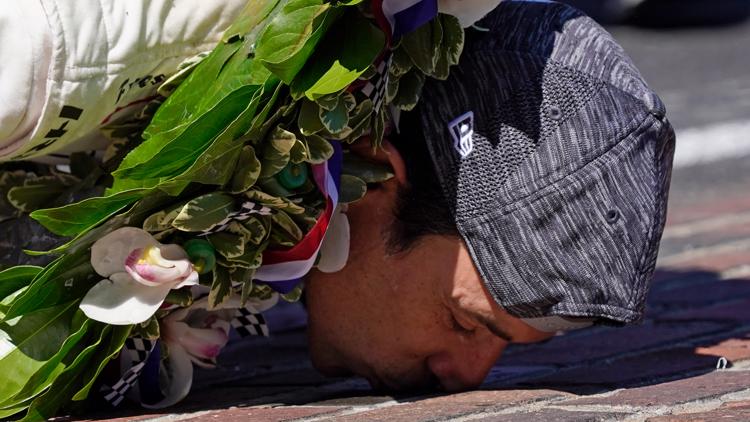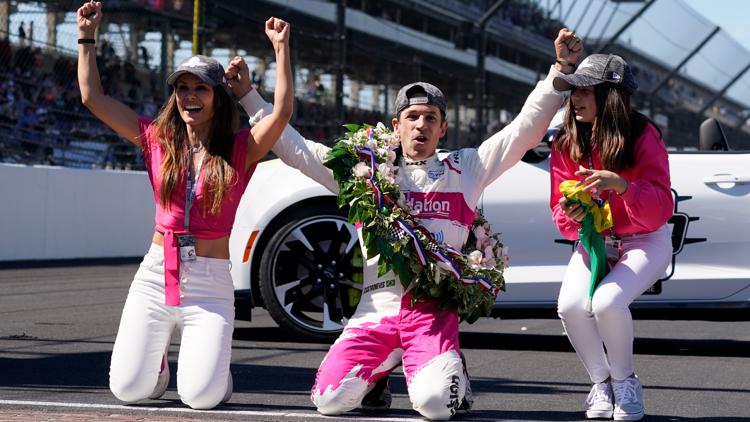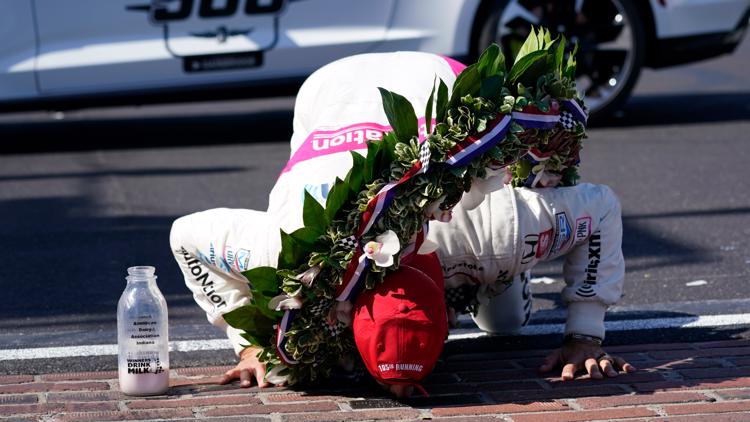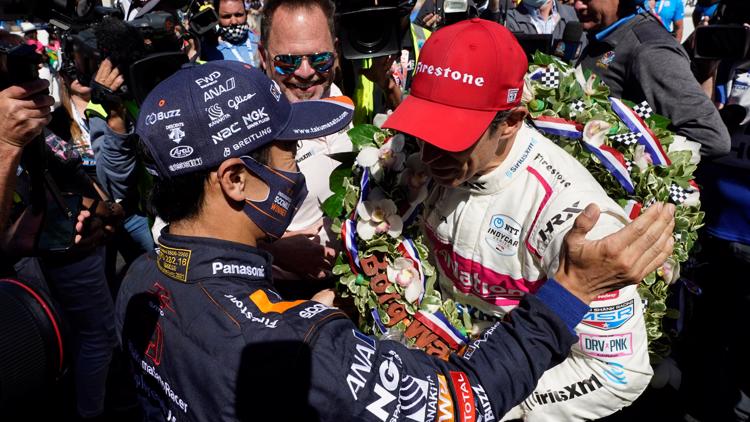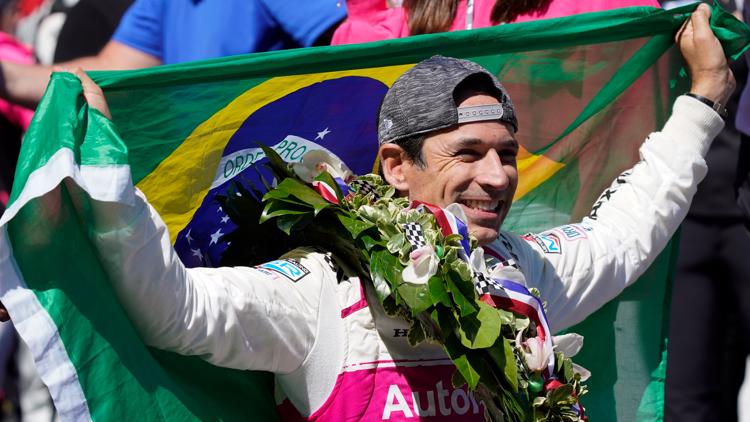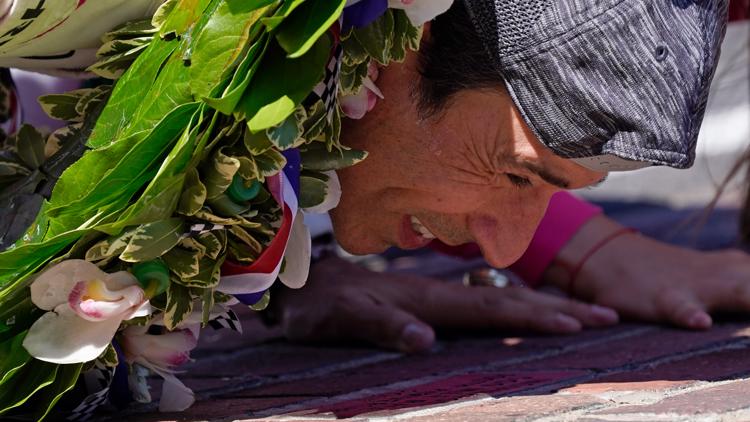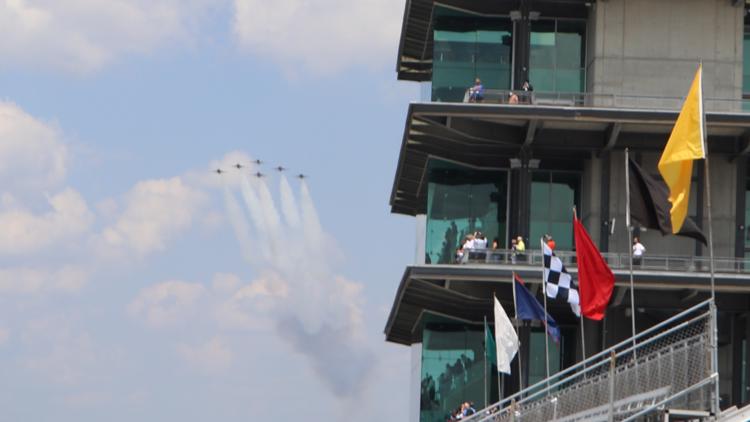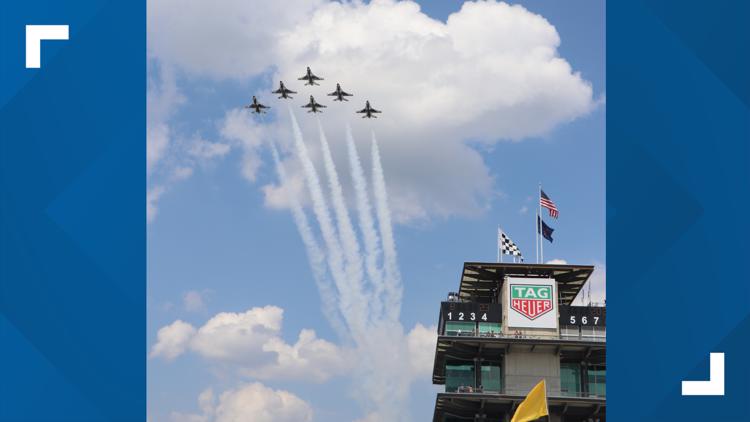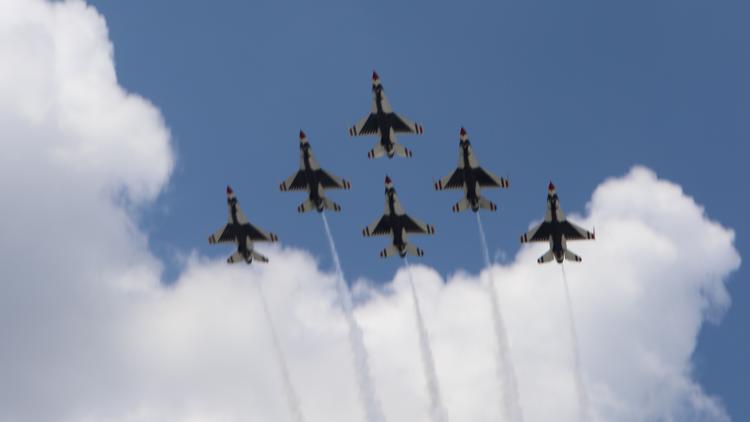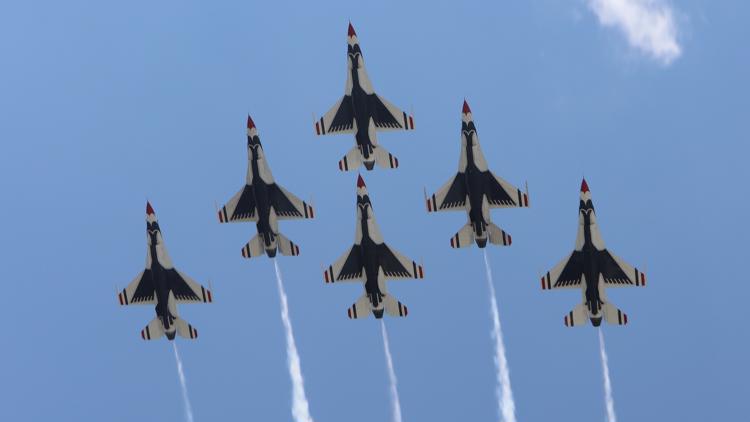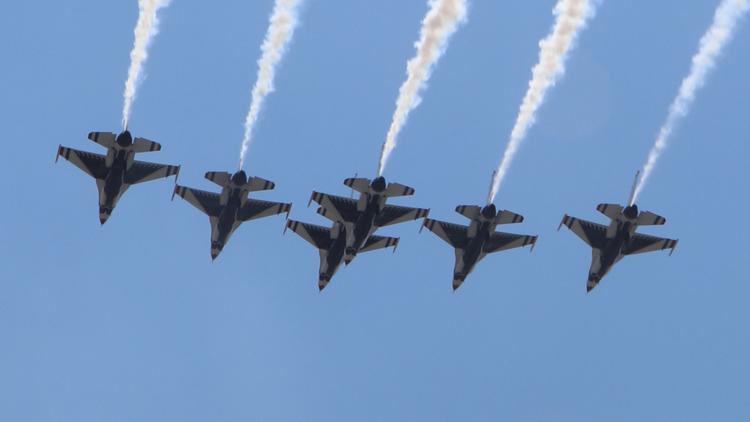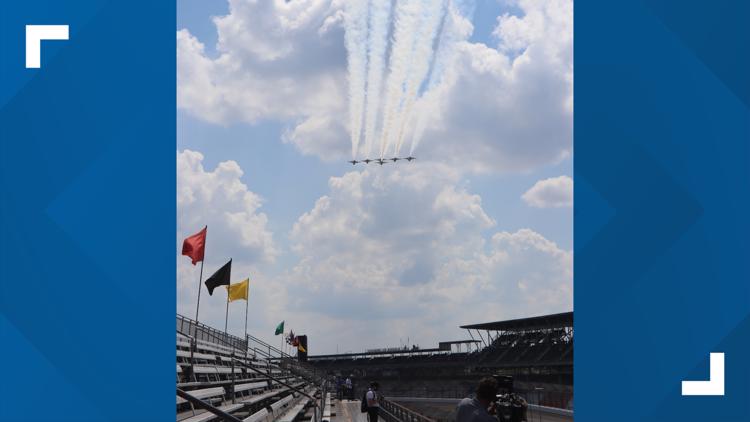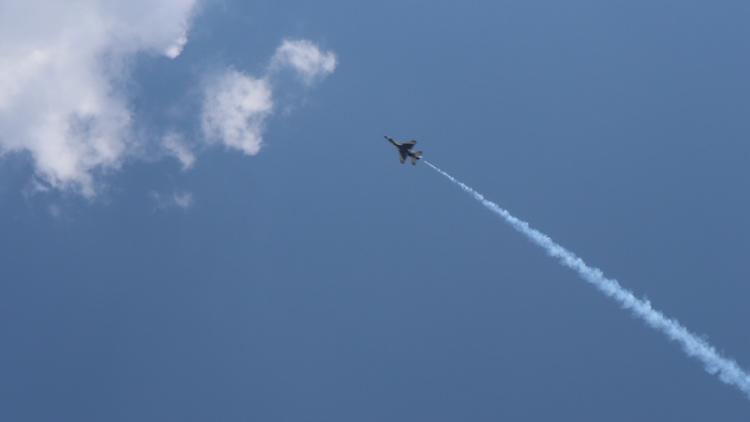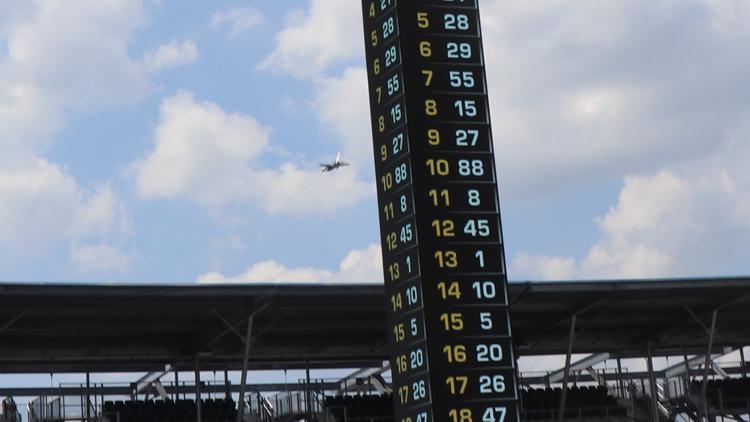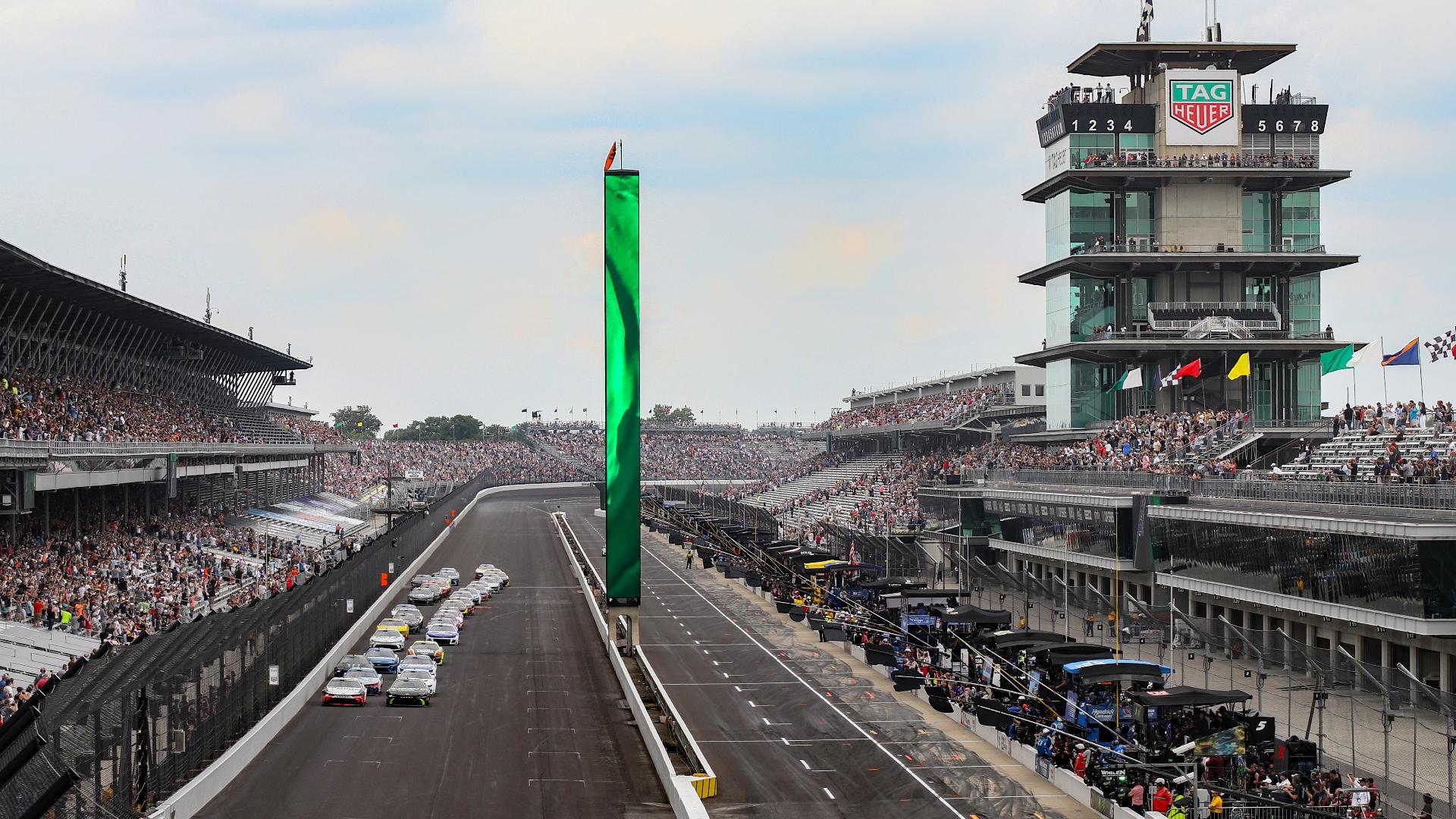INDIANAPOLIS — The month of May is in full swing in Indianapolis, with all attention focused on 16th and Georgetown leading up to the Indianapolis 500.
We've compiled a list of things you need to know, may already know or can just tuck away to win a bar bet some day.
Here are 33 things to know ahead of the 2022 Indianapolis 500:
1. The 106th Running of the Indianapolis 500 is scheduled for Sunday, May 29, 2022. The race consists of 200 laps around the 2 1/2-mile track at the Indianapolis Motor Speedway for a total of 500 miles.
The first "500" was held May 30, 1911 and was won by Ray Harroun. The race has been held on or near Memorial Day every year, with three exceptions: No races were held in 1917 and 1918 due to World War I and from 1942 through 1945 during World War II, and was held August 23, 2020 due to the coronavirus pandemic.
Gates open at 6 a.m. on race day, with the green flag dropping at 12:45 p.m.
2. Helio Castroneves joined an exclusive club last year, claiming his fourth Indianapolis 500 victory. Only Castroneves, A.J. Foyt, Al Unser and Rick Mears have won the 500 four times.
The Brazilian, who turns 47 this month, won his first two Indy 500s in his first two tries in 2001 and 2002, the first driver to ever win his first two Indy 500 entries. He will be back in the No. 06 Meyer Shank Racing car this year, trying to become the first five-time winner of the race.
Helio Castroneves celebrates 4th Indianapolis 500 victory
3. While no driver can join the four-timer's club this year, two drivers will be back in the field trying to become the 11th driver to win the race at least three times.
Takuma Sato, who won the 2017 and 2020 races, and Juan Pablo Montoya, who won in 2000 and 2015 will be trying to make it to Victory Lane for the third time at Indianapolis.
4. Five drivers — Scott Dixon, Tony Kanaan, Simon Pagenaud, Will Power and Alexander Rossi — will be trying to win their second Indianapolis 500. In addition to the 10 drivers who have won three or more 500s, 10 others have won the race twice.
5. Seventy-four American drivers have won the Indianapolis 500, though it's been six years since a U.S.-born driver has taken the checkered flag. Alexander Rossi won the 2016 Indianapolis 500 in his first shot at the race.
The number of American winners is slightly skewed by history, however, as U.S.-born drivers won all but nine Indy 500s from 1911 through 1988.
Thirteen Americans, including Rossi, are slated to drive in this year's race.

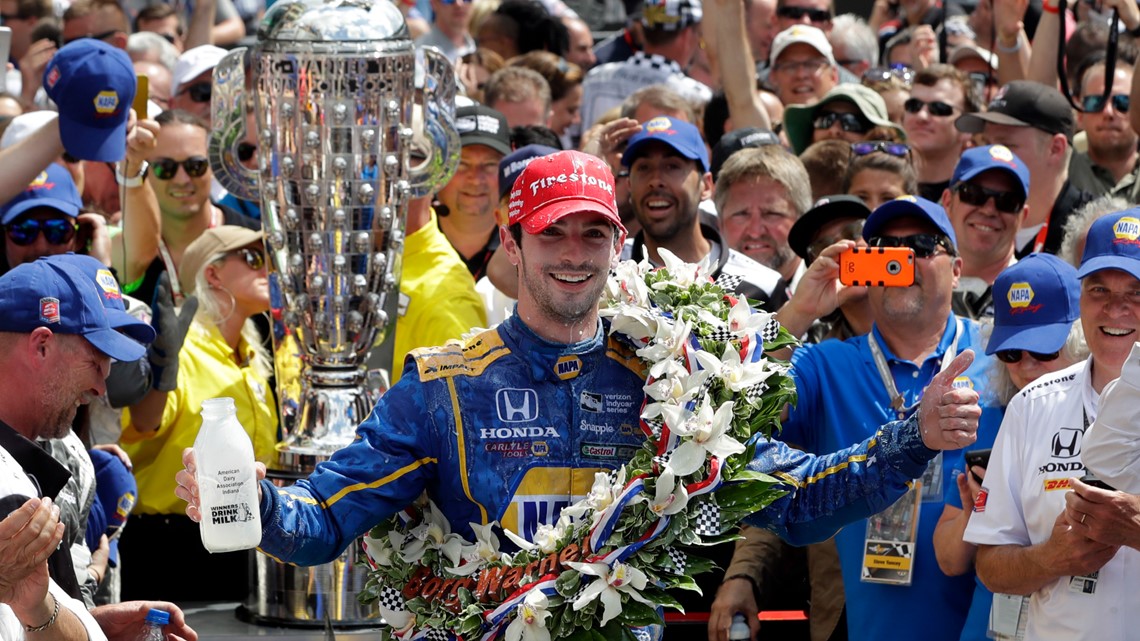
6. Despite the pride the Indianapolis 500 brings to Hoosiers from all corners of the state, it's been more than 80 years since a driver born in Indiana has won the race.
Shelbyville's Wilbur Shaw won the race in 1937, 1939 and 1940, which was the last time an Indiana native stood atop the victory podium at IMS.
Noblesville native Conor Daly carries the Hoosier flag into this year's Indy 500, as the lone Indiana-born driver in the race. Owner/driver Ed Carpenter was born in Illinois, but the Butler University grad lists Indianapolis as his hometown and would no doubt bring the house down with a victory on May 29.
Even with an eight-decade drought, Indiana still holds a share of the record for most winning drivers and race wins. Seven different Hoosiers have won the Indianapolis 500 a total of nine times, tying Indiana with California (seven drivers) and Kansas (nine race wins).
7. Ten rookies have won the Indianapolis 500, including Castroneves, Montoya and Rossi. Before Montoya's win in 2000, it had been 34 years since Graham Hill won his debut in 1966 and 38 years before that when Louis Meyer won his first Indy 500.
Seven rookies are currently entered in this year's race — the most since seven rookies drove in the 2014 500.
One of those rookies is no stranger to kissing the bricks at IMS. Jimmie Johnson won the Brickyard 400 four times during his NASCAR career and is taking his first shot at the Indy 500 this year.


8. He's not a rookie, but Colton Herta could make history as the youngest winner in Indy 500 history with a win this year.
Troy Ruttman was 22 years and 80 days old when he won the 1952 race. Herta, who was born on March 30, 2000, would break that mark by a couple weeks.

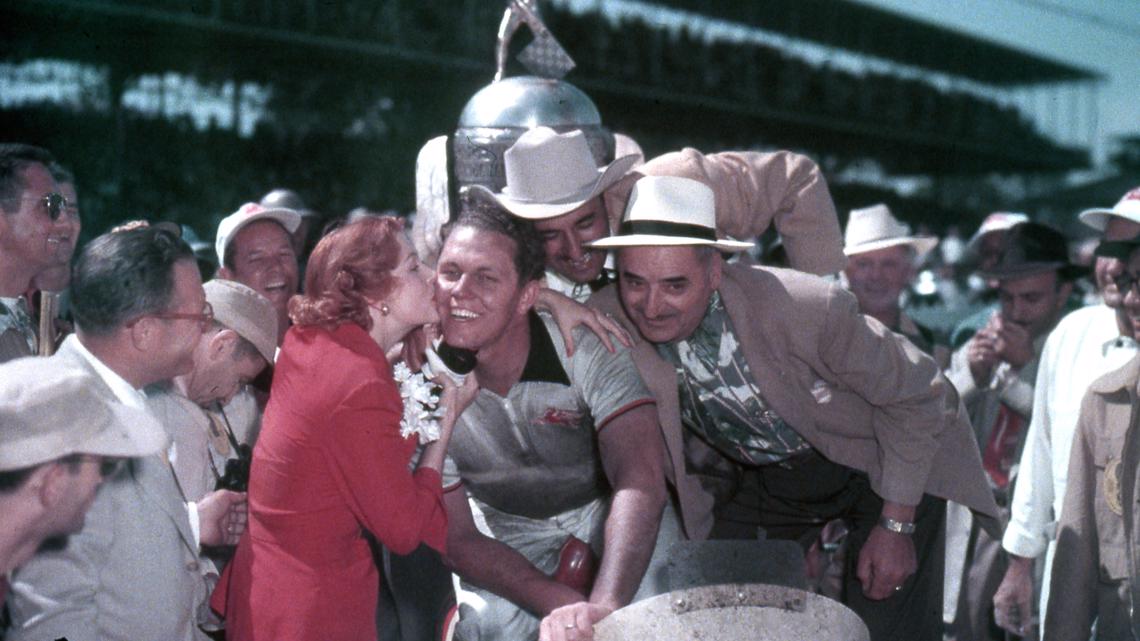
9. Two years after racing in front of a largely empty Speedway due to the pandemic and a year removed from a reduced-capacity crowd of 135,000 fans, the stands will once again be full at IMS for the 500.
10. With the lifting of capacity limits and other COVID-19 restrictions, the Snake Pit returns to Turn 3 at IMS.
This year's lineup for the infield concert includes Martin Garrix, deadmau5, Galantis, Steve Aoki, and Yellow Claw. Revising an earlier policy, IMS said small coolers, along with food and drink, will be allowed in the Snake Pit.
11. Also back for the first time in three years are the traditional Carb Day festivities.
The last two hours of practice before the May 29 race take place from 11 a.m. until 1 p.m. on Friday, May 27, followed by the pit stop challenge at 2:30 p.m.
The party then moves to the infield where Morris Day and the Time opens the Carb Day concert at 3:30 p.m. in Turn 3. Rock supergroup Kings of Chaos and Rick Springfield headline the concert.
12. One tradition that won't be returning this year is the release of thousands of balloons during pre-race festivities. The balloon release has been part of the race day tradition at IMS since 1947.
Girl Named Tom, winners of Season 21 of "NBC's The Voice" will take part in pre-race festivities, performing "America the Beautiful" before the race.
The trio, consisting of siblings Caleb, Joshua and Bekah Liechty, calls the northwest Ohio town of Pettisville home, but moved to South Bend last year.
Broadway actor and musician Jordan Fisher will sing the national anthem.
13. The U.S. Air Force Thunderbirds will put on a show over IMS on race day, two years after performing the flyover to empty grandstands before the 2020 race.
Indy 500: Air Force Thunderbirds flyover
IMS said last month they'll be adding a second flyover to the schedule, at the conclusion of "Back Home Again in Indiana" before the race.
14. Veteran IndyCar driver and team owner Sarah Fisher will drive the official pace car for this year's race. This year's pace car is the 70th Anniversary Edition 2023 Corvette Z06, which was unveiled May 10.
Fisher raced in nine Indianapolis 500s, the most of any female driver, and her four-lap qualifying speed of 229.439 mph ahead of the 2002 race makes her the fastest woman in Indy 500 history.
She started her own racing team, Sarah Fisher Racing, in 2008.
15. Speaking of qualifying, a new format determined who will lead the field to green on May 29.
The 12 fastest drivers on the first day of qualifying, May 21, were back on track Sunday to battle each other for the pole position. After one round of qualifying attempts, the fastest six drivers again faced off, with Scott Dixon dominating the final round with a four-lap qualifying average speed of 234.046 mph.
Which brings us to...
16. While no drivers can match Rick Mears' six pole positions after this year's qualifying, Dixon is knocking on the door.
Dixon's dominating pole run, the fastest ever for a pole in Indy 500 history (and the second-fastest qualifying run behind Arie Luyendyk's four-lap average of 236.896 mph in 1996), was his fifth pole at Indy, breaking a four-way tie with Helio Castroneves, A.J. Foyt and Rex Mays of drivers with four starts from the pole.
Dixon is now one of 12 drivers who have won the pole for the 500 in consecutive years. Of those drivers, Parnelli Jones' 1963 Indy 500 win is the only time a driver won the race after qualifying first for the second straight year. (And Castroneves is the only other driver to win the 500 during a two-year pole-winning streak when he won the 2009 race from the pole and qualified first again in 2010.)

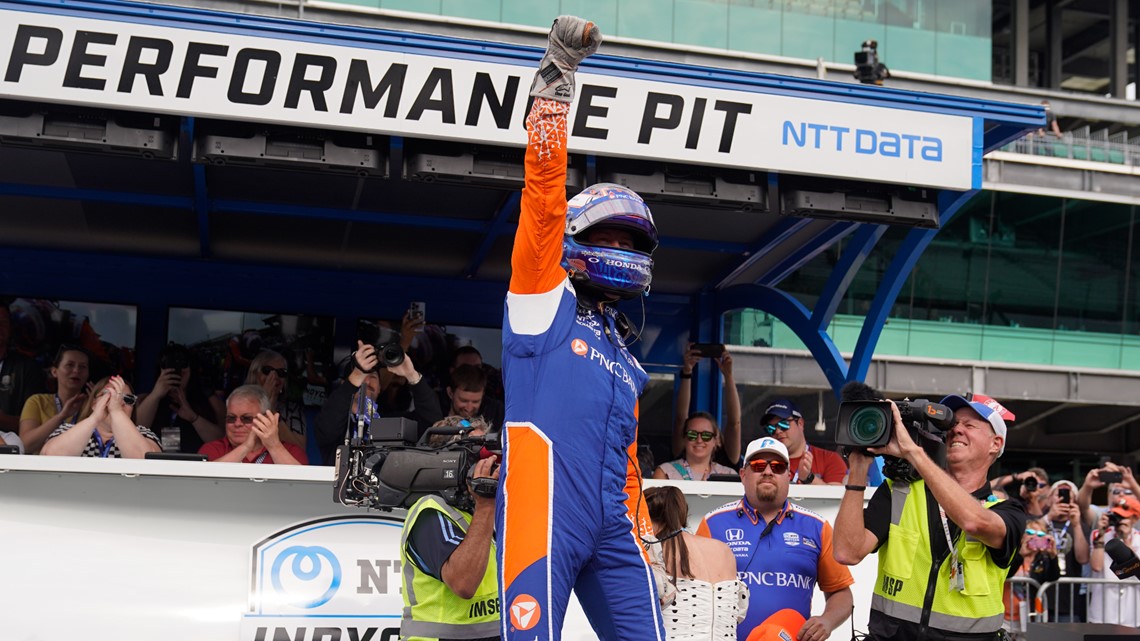
17. Cash is no longer king at the Indianapolis Motor Speedway.
IMS announced the track is going "cashless" during the month of May, with only credit/debit card purchases or payments by phone will be accepted inside the track.
If you find yourself with only cash on hand, "Cash-to-Card" machines are available to transfer the money to a debit card that can be used at IMS gift shops and concession stands, then anywhere MasterCard or Visa debit cards are accepted.
You can still use cash for parking and gate admission.
18. When British driver Stefan Wilson signed on with Cusick Motorsports and DragonSpeed earlier this month, it all but ensured the traditional number of 33 drivers will fill the field on race day.
Wilson is attempting to make his fourth career Indy 500 start and will drive the No. 25 car, the same number his older brother, Justin, used when he died from injuries suffered during an IndyCar race at Pocono in August 2015.
19. Another May tradition returns to Indianapolis the day before the race.
The AES 500 Festival Parade will delight spectators downtown, starting at 11:45 a.m. on May 28. The shortened parade route will start at North and Pennsylvania streets, travel south to Washington Street, then turn west to Meridian Street and back north to North Street.
The parade will feature balloons, floats and the 33 drivers in the Indy 500 field. The parade's grand marshal will be August A. Ebeling, a longtime 500 Festival volunteer.
20. While you're downtown for the parade, you'll notice several streets may have new names.
Thirty-three street signs were posted in recent weeks honoring the drivers in the field for this year's race.
Here's where you can find your favorite driver's sign.
21. While Castroneves' chase for a fifth title gets the headlines, Scott Dixon could make a bit of history himself.
Dixon, the 2008 race winner, has led 570 laps in the Indy 500, just 74 laps behind all-time leader Al Unser, one of the race's four-time winners. Dixon currently sits in third place, 42 laps led behind 1915 winner Ralph DePalma.


22. Dixon has led at least one lap in 14 of the 19 Indianapolis 500s he has entered, a mark he shares with 2013 winner Tony Kanaan, who will be making his 21st start this year.
Castroneves has a chance to tie both drivers, having led 13 of the 20 races he's entered, which currently puts him in a tie with fellow four-time winner A.J. Foyt.
23. Whether or not he wins his fifth Indy 500, Helio Castroneves will likely join another elite club shortly after the start of this year's race.
Castroneves needs to complete just two laps to reach 10,000 miles completed in competition at the Indy 500. Only four-time winners Al Unser (10,890 miles) and A.J. Foyt (12,272 1/2 miles) have completed more miles in the race.
24. Ed Carpenter will be entering his 19th Indianapolis 500, but is still looking for his first win.
Only George Snider (22 starts) and Gary Bettenhausen (21 starts) have started more Indy 500s without claiming victory.

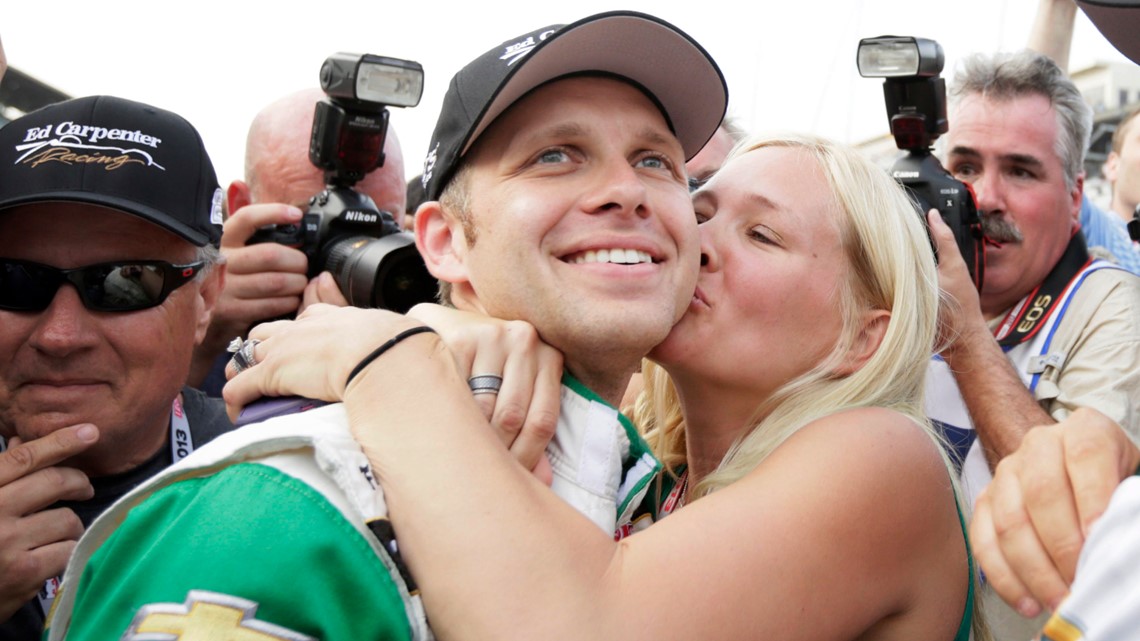
Carpenter has led in seven of his 18 starts for a total of 146 laps and has finished in the top 10 six times, including three top-5finishes. He finished second to Will Power in the 2018 race. He has started from the pole position three times.
25. While IMS owner Roger Penske has dominated the race with 18 wins as a team owner, Chip Ganassi and Michael Andretti are looking to break a tie for second if they can pick up their sixth Indy 500 win this May.
Ganassi hasn't kissed the bricks since Dario Franchitti's win in 2012 — the third win for Ganassi in five years. It's been five years since Andretti picked up his fifth win, when Takuma Sato picked up his first win.
26. The 2022 race marks a special anniversary at the Indianapolis Motor Speedway.
Fifty years ago, Jim Nabors performed "Back Home Again in Indiana" before the race for the first time. The famous actor was attending his first 500 in 1972, planning to enjoy the race as a fan, when Tony Hulman asked if he'd sing the song as part of the pre-race festivities.
Nabors stunned the crowd and was invited back the following year and beyond, singing the iconic tune 36 times through 2014.
Nabors passed away in 2017.
27. If you can believe it, this year's race will be Marco Andretti's 17th start in the Indy 500, one more than his father, Michael.
Marco finished second in his first 500 and has added four more top-5 finishes to his resume, along with the pole position in 2020, but like his father, he's never won. Michael Andretti's 431 laps led remains the most by a driver without a win in the 500.
Michael will serve as race strategist for his son, as they try to put an Andretti face on the Borg-Warner Trophy for the first time since Mario Andretti's win in 1969.
28. The Andrettis aren't the only father-son pair trying to claim victory at IMS.
Bryan Herta is also race strategist for his son, Colton, and Graham Rahal is looking for his first 500 win and another Indy victory for his father, 1986 Indy 500 champion Bobby Rahal, co-owner of Rahal Letterman Lanigan Racing.
29. A note for the numerologists looking to pick a winner in this year's race, cars sporting No. 3 have visited Victory Lane more often than any other number, with 11 wins, including three of Helio Castroneves' four victories.
Second is the No. 2 car with nine wins, last in 2015 with Juan Pablo Montoya, and the No. 1 car has the third-most wins of any number, but hasn't been driven to victory since Al Unser's third of four wins in the 1971 race.

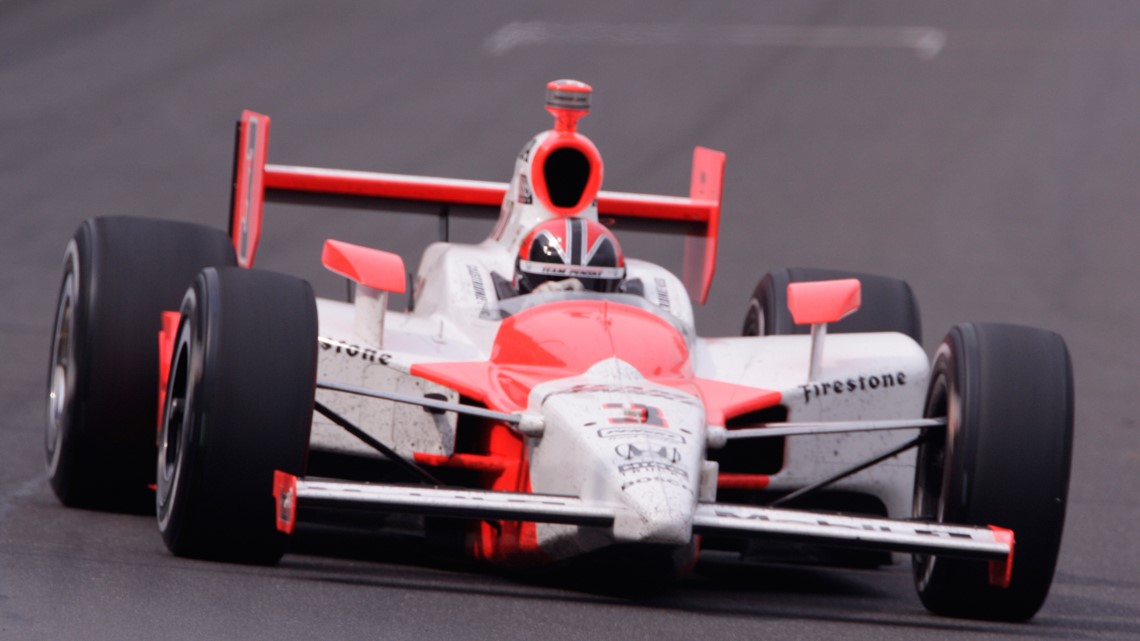
30. Still looking for a number angle? Consider this: The last eight Indianapolis 500 winners have driven a car with an even number.
2021: No. 06 Helio Castroneves
2020: No. 30 Takuma Sato
2019: No. 22 Simon Pagenaud
2018: No. 12 Will Power
2017: No. 26 Takuma Sato
2016: No. 98 Alexander Rossi
2015: No. 2 Juan Pablo Montoya
2014: No. 28 Ryan Hunter-Reay
31. If you're thinking about leaving early to beat the traffic, think again.
Eleven times in the last 12 races, a driver who led the 500 in the final ten laps failed to win the race. That includes three leaders last year who didn't quite have enough to bring a victory home — Felix Rosenqvist and Takuma Sato were forced to pit for fuel and second-place finisher Alex Palou was passed by Castroneves on his way to history on Lap 199.
In addition to Rosenqvist and Sato, three other leaders needed to bow out for a fuel stop, but several others lost the lead on a pass as late as Lap 199.
Then, of course, there was the 2011 race, when Dan Wheldon passed JR Hildebrand on the final front stretch after Hildebrand hit the wall in Turn 4 on the last lap of the race. It was the only time Wheldon led in the race, setting the mark for the fewest laps led by an Indy 500 winner.

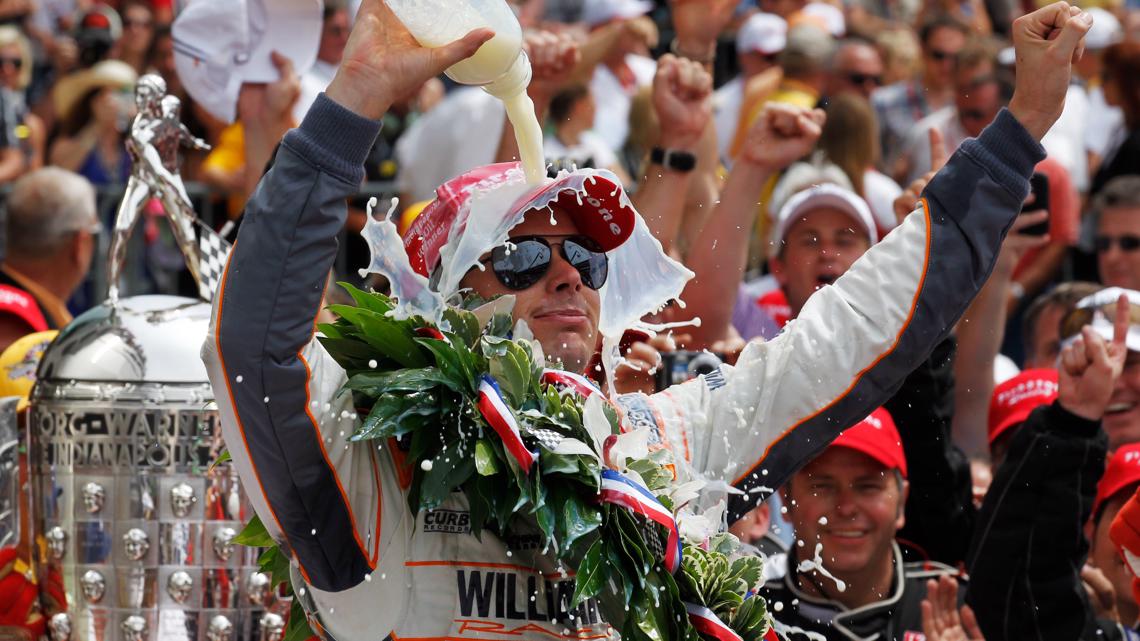
32. Eyes will be on the sky long before the Thunderbirds roar over the front stretch at the beginning of the race.
While the goal is to complete 200 laps for 500 miles, the race becomes "official" after 101 laps (252 1/2 miles) — just past the halfway point.
That's almost exactly what happened in 1976, when Johnny Rutherford took the checkered flag after just 102 laps due to rain.
A total of seven races, including the 1976 500, have been shortened due to rain:
1926: 160 laps
1950: 138 laps
1973: 133 laps
1975: 174 laps
1976: 102 laps
2004: 180 laps
2007: 166 laps
33. If the rain stays away, the next concern is the temperature.
The hottest Indy 500 on record took place in 1937, when the temperature reached 92 degrees. More recently, the races in 2012 and 2018 were run in 91-degree heat.
The coldest high temperature on race day came in 1967, when the high got to just 70 degrees in Indianapolis.
Editor's note: This story has been updated to include Tony Kanaan as one of five drivers looking for their second Indy 500 win.


